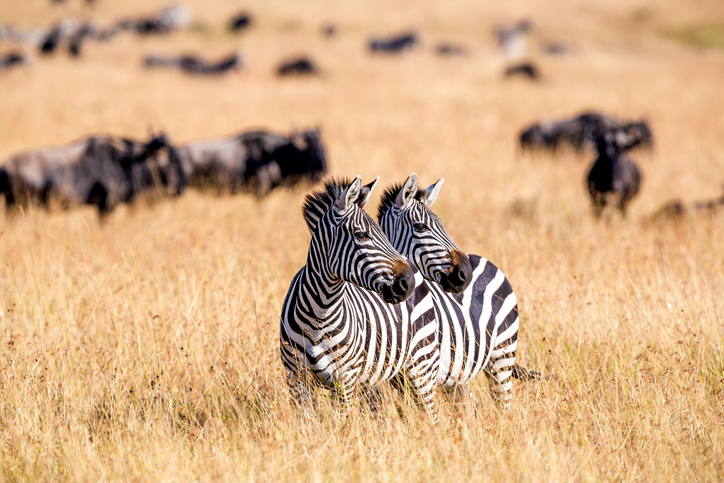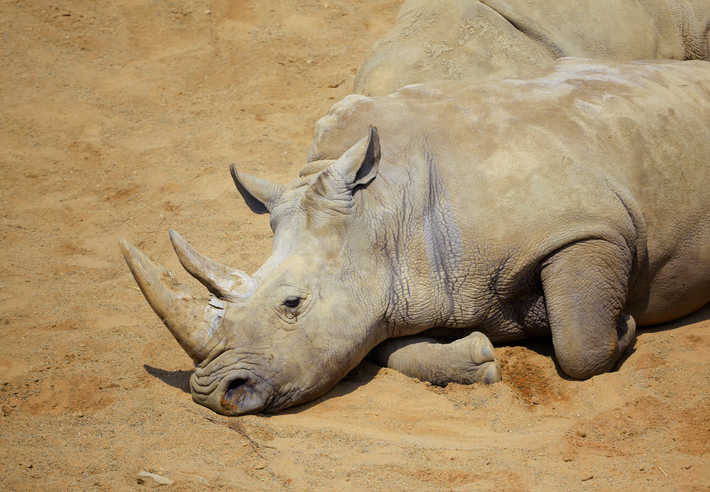Businesses and financial institutions face serious risks around biodiversity loss: not only do they depend on nature’s resources, they are also seen as responsible for extensive damage to the environment. The 2023 Global Development Conference explored the implications of biodiversity loss for the private sector, highlighting the critical need for guidance to shift its focus to “nature-positive” development.
What can be done to address the global biodiversity crisis and deliver “nature-positive” solutions for sustainable development? This was the central theme of the 2023 Global Development Network (GDN) conference. Researchers, policymakers and practitioners from across the world came together at the event in Quito, Ecuador, to discuss this conundrum – and potential solutions.
Advocating dramatic action to address potentially devastating losses of flora and fauna might rely on a moral case about respect for species and the intricate relationships between them. We are all part of that global ecosystem, after all. It might equally focus on self-interest, however. The natural world provides numerous essential ecological services, including food, medicine and clean water, without which humanity would be in dire straits.
The latter argument should certainly work well with private sector organizations, which increasingly need to account for both their impact on the natural world and their reliance on its resources in the form of raw materials and other inputs for production processes. The material risks to business that are associated with biodiversity loss are a critical matter for both companies and investors.
What’s more, emerging evidence not only shows that “‘biodiversity risk’” affects the prices of privately issued financial assets, such as equities, research also suggests that it hurts sovereign credit ratings in places where ”partial ecosystems collapse” has harmed fisheries, tropical timber production and wild pollination. Financial markets are no longer ignoring nature.
Food and agriculture
One sector with a particularly substantial impact on nature is food and agriculture. As the World Bank notes, “it is the foundation of food security, yet extremely vulnerable to climate change and a major contributor to greenhouse gas emissions as well as habitat and biodiversity loss.” Managing the trade-offs between ecological conservation and providing enough for everyone to eat is one of the big challenges for nature-positive development.
The GDN conference featured a plenary session on balancing production and conservation goals, at which Jyotsna Puri of the International Fund for Agricultural Development said: “We are already producing enough food for ten billion people, and the food industry contributes to a third of carbon emissions. We need to rethink the food production system to treat nature in its own right.” Elena Lazos Chavero of the Universidad Nacional Autónoma de Mexico added: “What we have to bring in the discussion of sustainable agriculture, food security and biodiversity is food justice and social equity.”
But is Big Food doing enough for sustainability? No, suggests the latest Food and Agriculture Benchmark from the World Benchmarking Alliance which ranks the 350 most influential companies in the sector on their environmental, nutritional and social impact. According to the data, the vast majority of companies fail to recognize their responsibility to protect the Earth and feed the world’s population in an equitable way.
Trade
International trade is another key area for trade-offs. Trade can exacerbate biodiversity degradation, but it also has the potential to support conservation, sustainable use and restoration. Leading a session on nature-positive trade for sustainable development, Marianne Kettunen of TRADE Hub said that international cooperation and the alignment of trade policies with environmental regulations, removal of harmful subsidies and promotion of sustainable practices can help to address the biodiversity crisis.
A report for the UN Environment Programme remarks that the Kunming-Montreal Global Biodiversity Framework (GBF), adopted in December 2022, provides a fresh reference point for the relevance of trade policy to the biodiversity agenda. The increasing focus on the environment and sustainable development at the World Trade Organization also presents an opportunity to discuss where trade policy could support delivery of the agenda – and align it to the UN 2030 Agenda for Sustainable Development and its Sustainable Development Goals – with sustainable trade as part of the solution.
Finance
What about interactions between nature and the financial system? As with climate change in recent years, biodiversity loss is increasingly recognized as a source of financial risk that may threaten financial stability. It thus falls within the mandates of central banks and financial supervisors. A report from the Network for Greening the Financial System recommends that these public authorities start to assess the degree to which financial systems are exposed to the risk, by developing biodiversity-related scenario analysis and stress tests, and dashboards of biodiversity metrics.
The report also calls for “the necessary financial architecture for mobilizing investment for a biodiversity-positive economy.” This challenge was extensively discussed at the conference, including reference to the “Summit on a New Global Financial Pact” convened in Paris by President Macron in June 2023. Its aim was “to lay the foundations for a renewed international financial system, creating the conditions for a financing breakthrough so that no country has to choose between reducing poverty, combating climate change and preserving biodiversity.”
A key part of the financing agenda is creating new classes of nature-positive assets. These were discussed at a conference plenary on financing biodiversity conservation. Camilo Santa of the Inter-American Development Bank (IDB) cited a number of examples, including Ecuador’s “debt-for-nature” swap, which involves selling “blue bonds” that will funnel money into conservation of the Galapagos Islands, one of the world’s most precious ecosystems. This Ecuadorian case may be a model for other highly indebted but nature-rich countries. The IDB has also helped countries, such as Colombia and Costa Rica, to develop post-pandemic recovery strategies based on natural capital.

The way forward
The ultimate aim of all these projects and programs around biodiversity and sustainable development is to support a shift in global financial flows away from nature-negative outcomes and toward nature-positive outcomes. As was broadly agreed by participants at the GDN conference, that must involve a combination of public and private sector initiatives, as well as a variety of carrots and sticks to encourage the required changes in individual and collective human behavior.
Much can be learned from our response to the threat of climate change. For example, the Task Force on Climate-related Financial Disclosures, which galvanized corporate reporting on climate risks, has inspired the Taskforce on Nature-related Financial Disclosures (TNFD). The latter describes itself as “a market-led, science-based and government-backed initiative providing organizations with the tools to act on evolving nature-related issues.” The TNFD has issued detailed guidance for business and finance on how to integrate nature into decision-making.
Governments are also beginning to draw lessons from the response to climate change by providing funding for nature conservation – for example, in Brazil’s National Green Growth Program and the European Green Deal. And representing more of a stick than a carrot is the European Union’s (EU) proposed nature restoration law. As with previous EU legislation to tackle climate change, this law would establish legally binding targets for forest, marine, urban and agricultural ecosystems.
Such initiatives effectively constitute self-imposed pressure on governments to deliver on conservation objectives – and they, in turn, will put pressure on the private sector and society as a whole.
In the end, the case for biodiversity protection can be made on the basis of the economic, social and health benefits of nature. Nature-positive development is good for both people and the planet.
The photograph accompanying the article and titled ‘Before the sun sets’ was captured by Santiago Sainz-Trápaga. It earned 3rd place preserving biodiversity section of the photo contest held by GDN in collaboration with WWF Ecuador during GDN’s 2023 conference on biodiversity and development.






